Federal funding for high-speed rail is dead, at least for the duration of the Trump administration. But at least three private high-speed rail lines are under consideration, and backers say they will not seek any federal funds (other than, possibly, loans) to complete those projects. How likely are these projects to succeed?
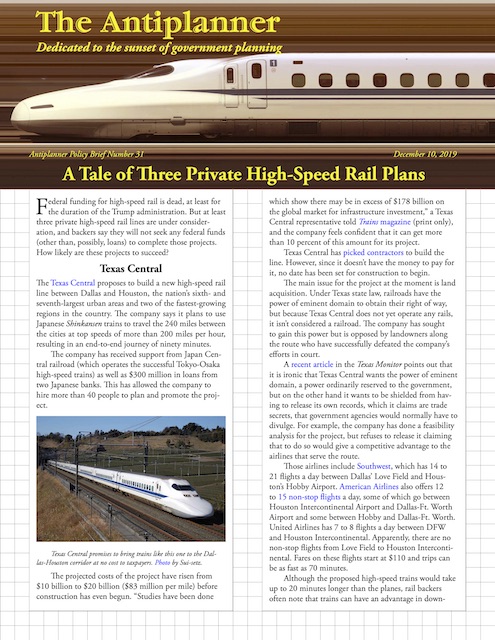 Click image to download a four-page PDF of this policy brief.
Click image to download a four-page PDF of this policy brief.
Texas Central
The Texas Central proposes to build a new high-speed rail line between Dallas and Houston, the nation’s sixth- and seventh-largest urban areas and two of the fastest-growing regions in the country. The company says it plans to use Japanese Shinkansen trains to travel the 240 miles between the cities at top speeds of more than 200 miles per hour, resulting in an end-to-end journey of ninety minutes.
The company has received support from Japan Central railroad (which operates the successful Tokyo-Osaka high-speed trains) as well as $300 million in loans from two Japanese banks. This has allowed the company to hire more than 40 people to plan and promote the project.
Texas Central promises to bring trains like this one to the Dallas-Houston corridor at no cost to taxpayers. Photo by Sui-setz.
The projected costs of the project have risen from $10 billion to $20 billion ($83 million per mile) before construction has even begun. “Studies have been done which show there may be in excess of $178 billion on the global market for infrastructure investment,” a Texas Central representative told Trains magazine (print only), and the company feels confident that it can get more than 10 percent of this amount for its project.
Texas Central has picked contractors to build the line. However, since it doesn’t have the money to pay for it, no date has been set for construction to begin.
The main issue for the project at the moment is land acquisition. Under Texas state law, railroads have the power of eminent domain to obtain their right of way, but because Texas Central does not yet operate any rails, it isn’t considered a railroad. The company has sought to gain this power but is opposed by landowners along the route who have successfully defeated the company’s efforts in court.
A recent article in the Texas Monitor points out that it is ironic that Texas Central wants the power of eminent domain, a power ordinarily reserved to the government, but on the other hand it wants to be shielded from having to release its own records, which it claims are trade secrets, that government agencies would normally have to divulge. For example, the company has done a feasibility analysis for the project, but refuses to release it claiming that to do so would give a competitive advantage to the airlines that serve the route.
Those airlines include Southwest, which has 14 to 21 flights a day between Dallas’ Love Field and Houston’s Hobby Airport. American Airlines also offers 12 to 15 non-stop flights a day, some of which go between Houston Intercontinental Airport and Dallas-Ft. Worth Airport and some between Hobby and Dallas-Ft. Worth. United Airlines has 7 to 8 flights a day between DFW and Houston Intercontinental. Apparently, there are no non-stop flights from Love Field to Houston Intercontinental. Fares on these flights start at $110 and trips can be as fast as 70 minutes.
Although the proposed high-speed trains would take up to 20 minutes longer than the planes, rail backers often note that trains can have an advantage in downtown-to-downtown times. That doesn’t really work in this case because the proposed station in Houston is not much closer to downtown than Hobby Airport. The proposed Houston station is nine miles from downtown Houston whereas Hobby Airport is 10 miles. At a little more than a mile from downtown, the proposed Dallas station is closer than Love Field, which is 7 miles from downtown.
An artist’s conception of what the Houston station may look like. Courtesy Texas Central.
Even if there was a time advantage, Houston and Dallas are not like New York or Tokyo, each of which have millions of downtown jobs. As of 2010, downtown Dallas had fewer than 70,000 jobs, just 2.3 percent of those in the region. Being closer to those 70,000 jobs than Love Field offers little advantage when the area around Love Field itself has more than 200,000 jobs. Downtown Houston had 170,000 jobs, or 6.4 percent of the region’s jobs. It is likely that more people live and work near the two commercial airports that serve each of the two regions than near the proposed train stations.
Population densities in Dallas and Houston are also much lower than in New York or Tokyo. The 2010 census found that both urban areas had fewer than 3,000 people per square mile, compared with 5,300 in the New York urban area. New York City had a density of 27,000 people per square mile, most of whom live within a quick transit ride to an Amtrak station, while the cities of Dallas and Houston had only 3,500 people per square mile, most of whom would have to drive to the Texas Central station to take a high-speed train. The Tokyo urban area, meanwhile, has more than 16,000 people per square mile while Osaka has more than 31,000. The point is that far fewer people are going to find a trip to train stations in Dallas or Houston to be convenient compared with people in New York, Tokyo, or Osaka.
The other time advantage rail lines supposedly have is due to the time required to get through airport security. Yet there are two reasons why Texas Central may not enjoy such an advantage. On one hand, increasing numbers of people are taking advantage of the Transportation Security Administration’s Precheck program, which allows travelers to bypass the most time-consuming parts of security. On the other hand, if Texas Central ever did reach the point where it was carrying millions of passengers per year, it could easily become a terrorist target itself, which would result in the imposition of security lines for rail travelers. Such security procedures are now imposed on some European high-speed trails such as the Eurostar.
The Dallas-Houston corridor also lacks any major urban areas between the two endpoints. New York-Washington has Baltimore, Newark, Philadelphia, Trenton, and Wilmington, each of which produce hundreds of thousands of passengers for Amtrak. Tokyo-Osaka has Kyoto, Nagoya, Yokohama, and several smaller urban areas, each of which produce lots of passengers on the Shinkansen.
Dallas-Houston has Roans Prairie, an unincorporated community with fewer than 100 people, which is being considered for a rail stop because it is 25 miles away from College Station, home of Texas A&M University. While students may provide some traffic, as a metro area of fewer than 180,000 people, College Station will be nothing compared with the intermediate stops on the Tokyo-Osaka or New York-Washington lines. Princeton Junction generates fewer than 50,000 passengers a year for Amtrak. While Princeton is smaller than Texas A&M, the distance from the rail station to Princeton is just 3 miles, while the 25 miles to College Station will limit student ridership.
Texas Central’s projections of 6 million riders a year by 2030 and 15 million by 2050 seem unrealistically high. Assuming the three airlines average 40 flights a day using 150-passenger planes with 85 percent of their seats filled, they currently carry under 2 million passengers a year. Texas Central would have to capture 100 percent of those passengers and get several million more off the highways to reach 6 million.
Although Texas Central has not released its full feasibility study, most such studies assume that competitors, such as the airlines, won’t change their behavior when a new mode is introduced. However, the flying distance between Dallas and Houston airports is almost exactly the same as the distance between Los Angeles and Las Vegas airports, and major airlines such as American and United offer fares on the latter route for under $50. I could easily see Southwest responding to the Texas Central by reducing its fares to under $40, while American and United could sell first-class seats at prices matching or undercutting Texas Central’s first-class fares.
The Japanese Shinkansen and most other high-speed rail lines around the world got most of their passengers from conventional trains, not from highway or air travelers. There are no conventional rail travelers today between Dallas and Houston, so Texas Central is starting at a severe disadvantage.
Even if Texas Central could manage to attract 6 million passengers a year, the annual payment on a $20 billion loan at 3 percent interest over 30 years is just over $1 billion. That means it would have to collect nearly $170 per passenger above its operating costs in order to repay loans or give funders a return on their investments. Since airfares are already far lower than that, I don’t see any way for this to ever happen.
Brightline to Orlando/Tampa
Brightline is a moderate-speed rail line that currently operates from Miami to West Palm Beach and is planned to continue to Orlando, with a possible further extension to Tampa. The current segment is limited to 79 miles per hour and has to compete with a commuter rail line called TriRail, not to mention highway traffic.
So far, it is losing bundles of money, but the owners claim to have raised enough money to build the 40-mile extension from Cocoa to Orlando. Trains on that extension will go as fast as 110 miles per hour, much slower than Texas Central, but at a much lower infrastructure cost. However, that cost was originally projected to be $1 billion, then $1.5 billion, and now is at $1.75 billion, or about $44 million per mile.
Brightline is the brainchild of Fortress Investment, a successful hedge fund, and specifically Fortress co-founder Wes Edens. Fortress bought the Florida East Coast Railway (FEC) in 2007 and first proposed to run passenger trains on the rail line in 2012. In 2018, Fortress sold the FEC but kept ownership of Brightline and the rights to run passenger train on FEC tracks. In 2018, Richard Branson made an undisclosed investment in Brightline, which now operates under the name Virgin Trains USA. However, Fortress still holds a majority interest.
Brightline trains are now running between Miami and West Palm Beach. Photo by BBT609.
Many people believe that Fortress’ success at investment means that it has done all the homework necessary to insure that Brightline will also be a success. However, Fortress’ track record is far from perfect. It invested heavily in Theranos, which is now considered to be a fraud. It also lost $125 million investing in what turned out to be a ponzi scheme. Most recently, Apple and Intel filed suit against Fortress for being a patent troll.
On the other hand, Brightline has one thing going for it that no other proposed high-speed rail line has: a huge potential market. The Port of Miami sees more cruise ship passengers — about 5 million a year — than any other terminal, and Port Everglades in Ft. Lauderdale is number 3 with 4 million more passengers. Many of these passengers would like to go to Disneyworld and other Orlando attractions, and Brightline plans to have a station located right at the Miami cruise ship terminal. If this line is successful, Brightline will build to Tampa, which sees another million cruise ship passengers a year.
The nation’s most successful tourist rail line is the White Pass and Yukon Route, whose Skagway, Alaska terminus receives around a million cruise ship passengers a year. Since Brightline’s moderate speed rail plans will cost much less than true high-speed rail, the project could easily earn enough money to cover its operating costs and repay its loans.
The main dark spot for Brightline is safety. Brightline passenger trains are much faster than the freight trains that usually run on FEC tracks, but since the current trains run at less than 80 miles per hour, they aren’t required to completely separate the right of way from autos and pedestrians. An Associated Press story last week revealed that Brightline is the most dangerous railroad in the country, having killed more than 40 people since it began. That represents one death for every 29,000 train miles, compared with a national average of one for every 565,000 train miles, making Brightline almost 20 times more deadly than the average railroad.
Brightline’s official response is to blame the fatalities on the victims, as they were not supposed to be on the tracks when the trains came by. This is like putting a hungry tiger in the middle of a city and putting up signs saying, “Beware of Tiger” and then blaming the victims if people are eaten because they ignored the signs. The reality is that the tiger shouldn’t have been there in the first place, and the trains shouldn’t be running at high speeds on tracks that are so accessible to pedestrians.
The immediate solution is to fence the entire FEC right of way between Miami and West Palm Beach. This won’t stop accidents at the many scores of grade crossings in the area, but could discourage pedestrians from walking on the tracks. The long-term solution is to elevate all of the grade crossings in the corridor, which would add significantly to Brightline’s cost.
XpressWest to Las Vegas
There have been several proposals for trains between Los Angeles and Las Vegas, but the current high-speed rail proposal to connect Las Vegas with southern California is known as XpressWest. With a top speed of 180 miles per hour, the proposed line is projected to take 90 minutes to get to Las Vegas.
Lending credibility to the project is the fact that it was recently purchased by Virgin Rail USA. After that transaction, the California Infrastructure and Economic Development Bank authorized a $3.2 billion tax-exempt bond to fund construction of the line, which in all is expected to cost $4.8 billion or about $25 million a mile.
Planners of XpressWest may have neglected to notice that there is a mountain range between Victorville and Las Vegas that will significantly increase construction costs. Photo by Stan Shebs.
This cost projection is unrealistically low considering it has to go over a mountain range while the essentially flat Florida line is expected to cost more than $40 million per mile. Further working against the proposal is the fact that the southern California end of the line will not terminate in Los Angeles, San Diego, or even San Bernardino, but the city of Victorville, which has fewer than 125,000 residents. The reason is that getting over the mountains into Los Angeles or one of the other major cities would significantly add to the cost of the rail line.
Interstate 15 has one of the best routes between Victorville and Las Vegas, yet must make a 3,800-foot climb over the mountains. High-speed trains cannot climb steep grades and the route will probably require expensive tunneling.
The problem is that, once travelers get over the mountains, the drive from Victorville to Las Vegas is only a little more than two-and-a-half hours. When compared with the added convenience of having a car when people reach their destinations, not to mention being able to stop at places along the way, saving an hour may not be worth it to most people.
The airline competition that XpressWest would face is even more formidable than that in the Dallas-Houston corridor. I count nearly 50 nonstop flights a day between Los Angeles International and Las Vegas, and close to 20 more fly out of Burbank, Long Beach, and Santa Ana airports. One-way fares on cut-rate airlines such as Frontier and Spirit start as low as $20 (plus various baggage and other fees), and — as noted above — even American and United airlines offer fares as low as $49.
No cruise ship passengers land in Victorville. Amtrak stopped running a train from Los Angeles to Las Vegas in 1997. Considering that the time required to transfer people from a bus to a train will consume a considerable part of the hour that the train will save, it is not likely that there will be hundreds of busloads of passengers stopping in Victorville to ride the high-speed train. As a result, I don’t see this doing a lot better than Texas Central.
A Severe Case of Optimism Bias
The Japanese investors who have supported Texas Central appear not to understand how different Dallas-Houston is from Tokyo-Osaka. Fortress and other American backers of the Texas and Las Vegas projects seem to be suffering from severe optimism bias. One of their optimistic assumptions is that they will actually be able to find investors willing to bet billions of dollars on high-risk projects using technologies that lose money almost everywhere else in the world.
The combination of the lower costs of moderate-speed rail plus a ready market of cruise ship passengers, who obviously don’t care that much about speed, could make the Florida project a success. But, if I were an investor, I would still be wary of that project due to the safety problems. The other two projects are almost certainly doomed to failure: they simply can’t compete against air and/or highway travel.
In 2007, a private company opened a high-speed rail line in Taiwan that was considered to be one the largest privately funded passenger rail projects in the last sixty or more years. Ridership turned out to be little more than half of what was projected, and the company had to get a government bailout. The government now owns about two-thirds of the company.
While I don’t object to privately funded passenger rail projects, I worry that the same thing will happen here: the operations will go bankrupt, followed by pressure to have the government take over and subsidize the lines. Then rail advocates will claim the projects are somehow “successful” and need to be extended, at taxpayer expense, to Jacksonville, San Antonio, Los Angeles, or other nearby cities.
We know that some people want to build a national high-speed rail network extensive enough to completely replace air travel, no matter what the cost. Thus, we must be especially wary of plans for private high-speed rail projects that are likely to fail and lead to government involvement.

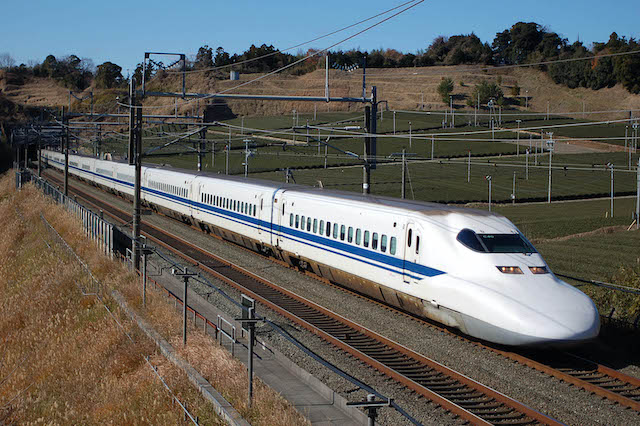
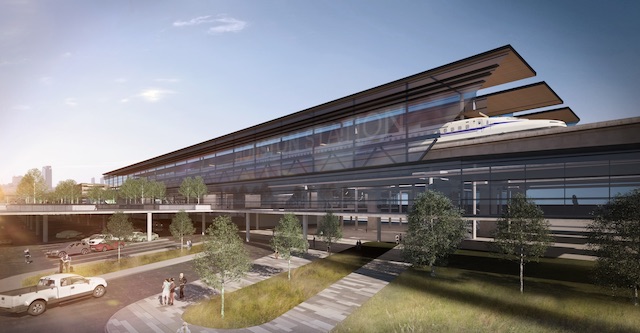
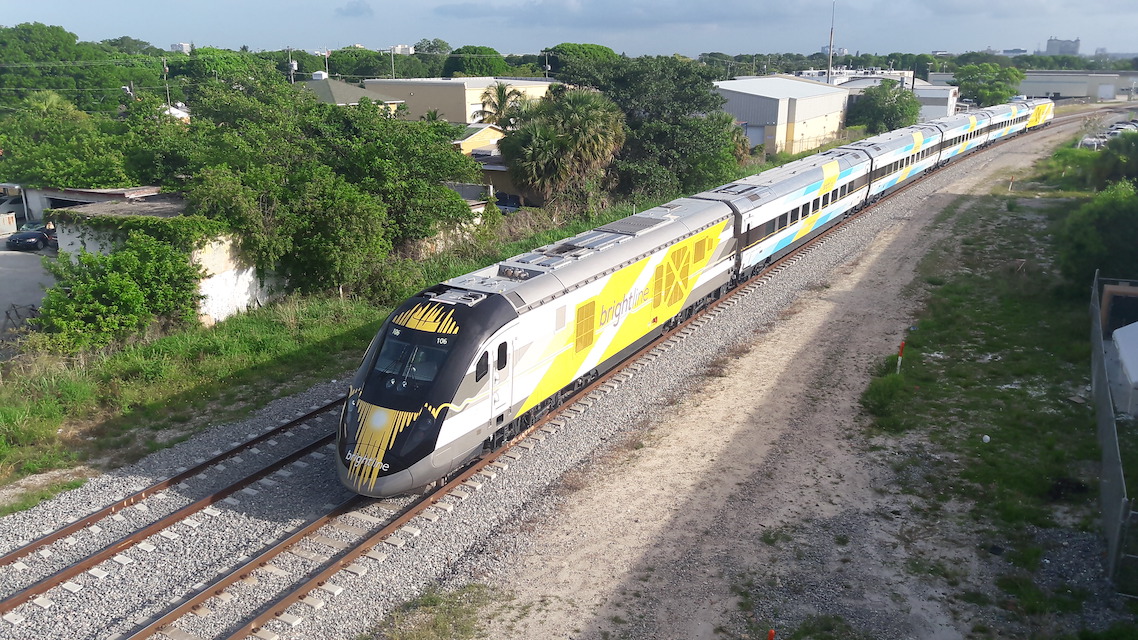
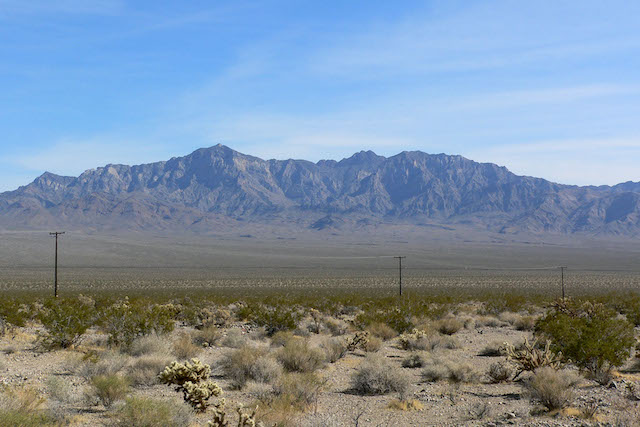
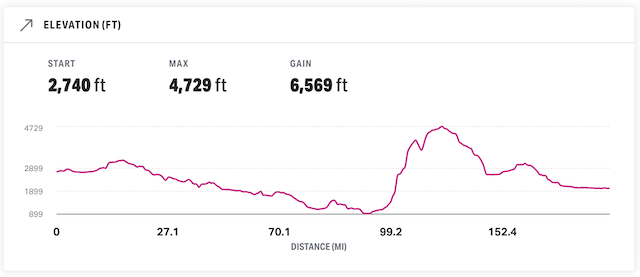







“A Severe Case of Optimism Bias
The Japanese investors who have supported Texas Central appear not to understand how different Dallas-Houston is from Tokyo-Osaka. Fortress and other American backers of the Texas and Las Vegas projects seem to be suffering from severe optimism bias.”
I’m surprised…what are these guys smoking? I can’t imagine they’re actually this clueless. I believe the endgame is, as Mr. O’Toole implied, to eventually seek a bailout once these services fall apart.
On another note, it appears that single-family zoning is racist, Mr. O’Toole. Planners and their social justice warrior allies will stop at NOTHING, with no lie being too shameless or ridiculous, to attack the way Americans actually want to live:
https://www.oregonlive.com/opinion/2019/12/opinion-learning-from-a-harmful-past-to-work-toward-racial-justice-together.html
Like many projects of questionable merit, the profits are not in the completed project, but in constructing the project. Subsidiary companies will be created to manage, consult, design, develop and construct the train lines and huge sums will be made separate and apart from the company that actually has to operate a money-losing railroad.
And the lenders and investors will be left holding the bag – at least until the government comes in and make us hold the bag for them.
Brightline likes to play off the deaths as being due to death-by-train. It’s a serious problem but far from the total picture. A fair number of those deaths wouldn’t have occured had they been made to properly upgrade at-grade crossings to quiet zone standards. Many others couldn’t been prevented by simple landscaping and fencing. They invoke drones but what they really just need to be held to the same standards that we have for autos.
Buying right of way is the Biggest obstacle.
Maglev as much as I hate to think of it as a boondoggle has advantage of being built elevated and out of way of all things including traffic. Transrapid in germany and Japan’s SC are by far still impressive to watch.
Transrapid carriages are 12’2” wide and accomodate six seats per row, Four in the more luxurious upper . Here’s an idea, Narrow it down to 10′ 2″ and have just four seats; two on each side with three in rows of upper class. When you trim down the width you make the vehicle less drag inducing cause it pierces the air more efficiently and add another car or two to fit the same capacity.
Having elevated track – a giant long bridge – is not a requirement for maglev or any other high speed trains. You’ll want to do it but you don’t have to. In fact, it costs a lot less not to.
This is one of the main issues facing communities that Texas Central ( TC ) wants to go through. To save money TC will want to avoid as much of this bridge building, this elevated track, as practical for them. BUt this will cause entire communities to be cut off, having to travel 5, 10, 20 miles just to get to a place 1/2 a mile on the other side of the tracks from them.